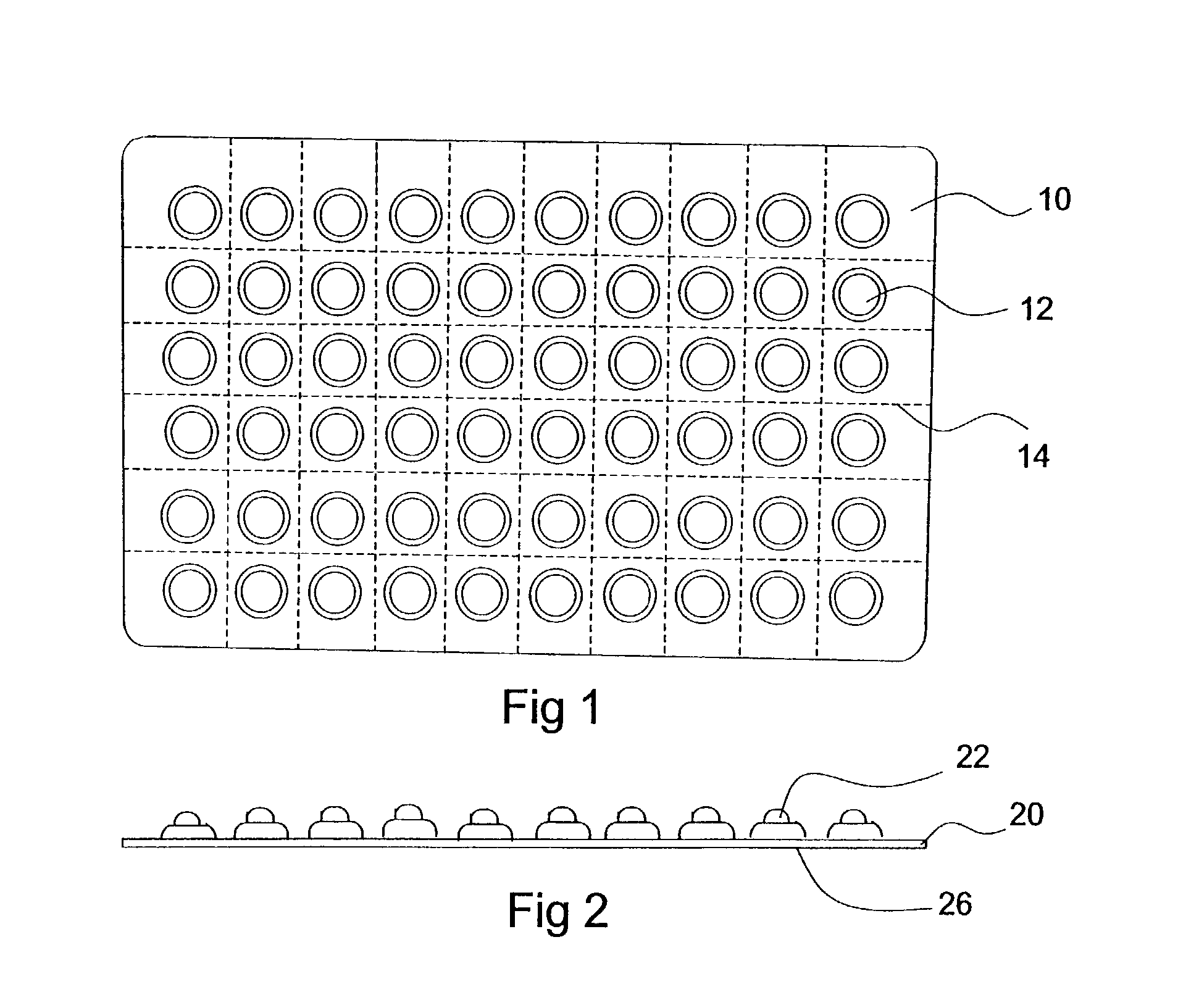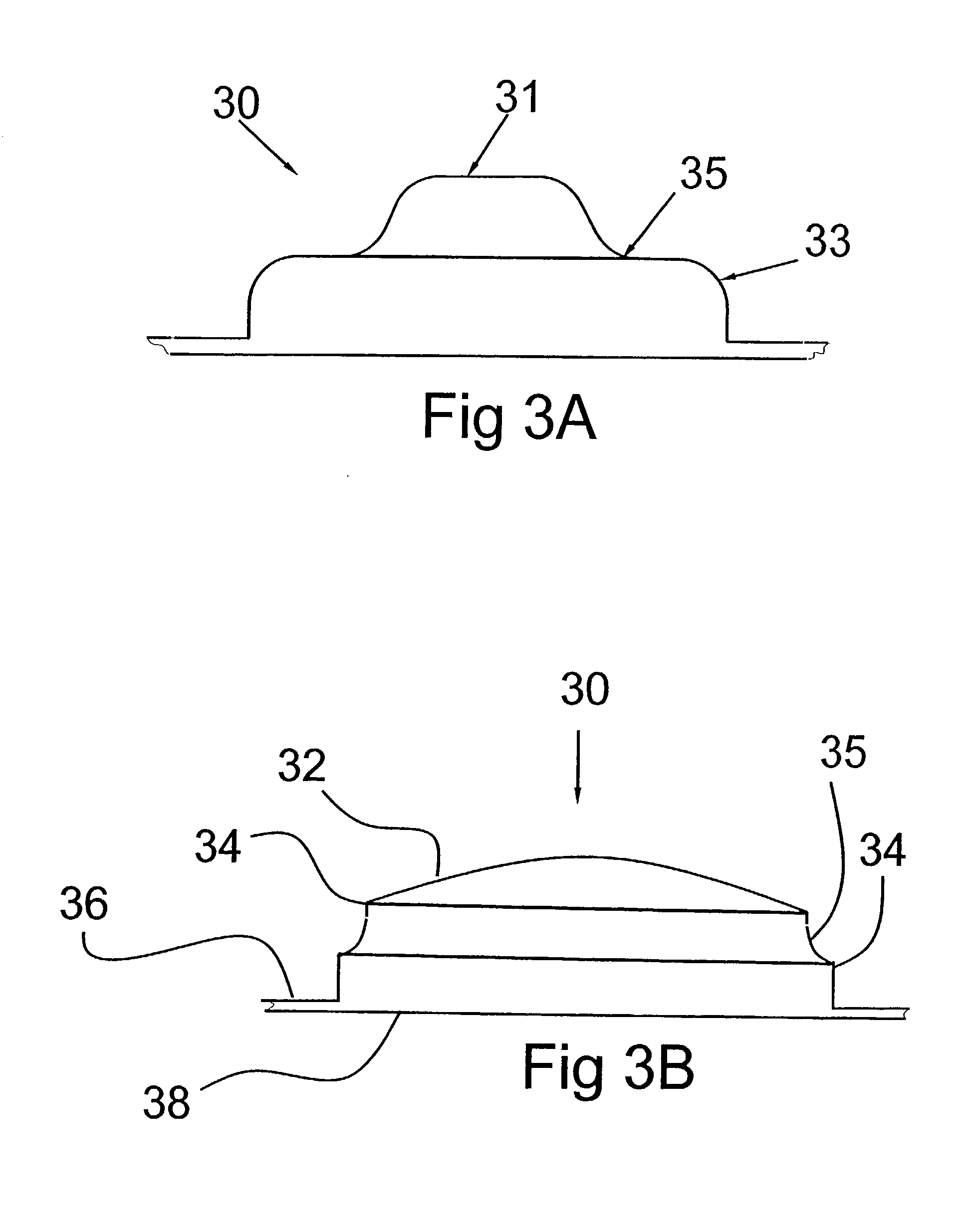Medication record system and dispenser
a technology of medication record system and dispenser, which is applied in the direction of confirming the correctness of markings, rigid containers, packaging goods types, etc., can solve the problems of high cost of electronic devices, complicated design, and inability to note whether medication has been taken
- Summary
- Abstract
- Description
- Claims
- Application Information
AI Technical Summary
Benefits of technology
Problems solved by technology
Method used
Image
Examples
second embodiment
[0094] FIG. 29a shows an injection-molded design for the dimpled blister. In this embodiment, two larger rings of plastic 292, 294 form an internal cut-out that is thinner than the remaining plastic in the blister and provide the mechanism for collapse. Once the blister is depressed, the rings of plastic 292, 294 collapse in the manner shown in FIG. 29b, providing a more uniform collapse. This design again reduces the likelihood of an uneven shape forming after the blister is depressed that could be misread tactilely by the user. FIG. 29c shows a top view of the collapsed blister described in FIG. 29b.
third embodiment
[0095] FIG. 30a shows an injection-molded design for the dimpled blister 300. In this embodiment, two larger rings of plastic 302, 304 form an external cut-out that is thinner than the remaining plastic in the blister and provide the mechanism for collapse. Once the blister is depressed, the rings of plastic 302, 304 collapse in a controlled manner as shown in FIG. 30b. This design again reduces the likelihood of an uneven shape forming after the blister is depressed that could be misread tactilely by the user. FIG. 30c shows a top view of the collapsed blister described in FIG. 30b.
[0096] FIG. 31 shows a non-uniformly collapsed blister 310 of the style shown in FIG. 30. When a package contained the blister cards is inadvertently damaged or pressure is accidentally applied to the blister on a side, the blister will collapse in the fashions shown, providing a different visual and tactile cue for the user. The user will then be able to distinguish a properly collapsed blister from one...
fourth embodiment
[0097] FIG. 32 shows an injection-molded design for the dimpled blister 320. In this embodiment, two larger rings of plastic 322, 324 form an internal cut-out that is thinner than the remaining plastic in the blister and that is separated from the top of the blister. These rings provide the mechanism for collapse. Once the blister is depressed, the rings of plastic 322, 324 collapse in a controlled manner as shown in FIG. 33. As in the previous embodiments, this design reduces the likelihood of an uneven shape forming after the blister is depressed that could be misread tactilely by the user.
[0098] FIG. 34 shows the blister of FIG. 32 as used in combination to hold medication and as a medication tracker. The blister card 340 contains the medication 342 between the blister 344 and the backing card 346 or materials well known in the art. When the blister 344 is depressed, the medication 342 pushes through the backing card 346, tearing open the backing card 346 and releasing the medica...
PUM
 Login to View More
Login to View More Abstract
Description
Claims
Application Information
 Login to View More
Login to View More - R&D
- Intellectual Property
- Life Sciences
- Materials
- Tech Scout
- Unparalleled Data Quality
- Higher Quality Content
- 60% Fewer Hallucinations
Browse by: Latest US Patents, China's latest patents, Technical Efficacy Thesaurus, Application Domain, Technology Topic, Popular Technical Reports.
© 2025 PatSnap. All rights reserved.Legal|Privacy policy|Modern Slavery Act Transparency Statement|Sitemap|About US| Contact US: help@patsnap.com



